Jane Keightley stays at atmospheric Casa Guidi, the Florence apartment that Robert Browning and Elizabeth Barrett called home
Photos by Jane Keightley
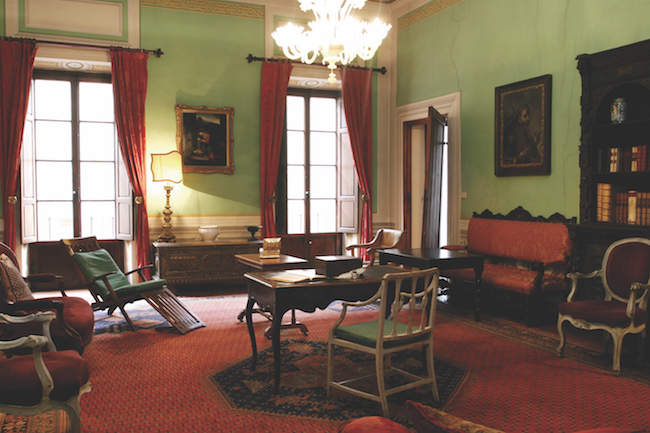
Ever since my first trip to Florence I had always wanted to look around Casa Guidi, the home of the poets Elizabeth Barrett Browning and her husband Robert. I was now getting the chance to actually stay there. I was thrilled, and decided to find out as much as I could about this famous couple and how they ended up living in Florence.
Casa Guidi was the name Robert and Elizabeth gave the apartment they rented on the first floor of the Palazzo Guidi. It stands on the Via Maggio in the Piazza San Felice, not far from the Palazzo Pitti. They lived here from 1847 to 1861 and during this time they wrote some of their finest poetry. But how had they ended up living in this beautiful city?
Elizabeth had been brought up as an invalid and was not encouraged to mix with the outside world. Her father was a strict and controlling man and after being visited at her home by the famous poet Robert Browning and falling in love with him, she knew she would not be allowed to marry him. A clandestine marriage was arranged and they escaped to Italy to avoid the wrath of Mr Barrett. The initially lived in Pisa but found that there was not enough going on there for their taste so they moved to Florence and settled in happily at the Casa Guidi. Although Elizabeth had always been sickly and frail back in England, she blossomed in the Italian sunshine and fell in love with her new life. During these years Elizabeth wrote Casa Guidi Windows and Aurora Leigh and Robert wrote Men and Women.
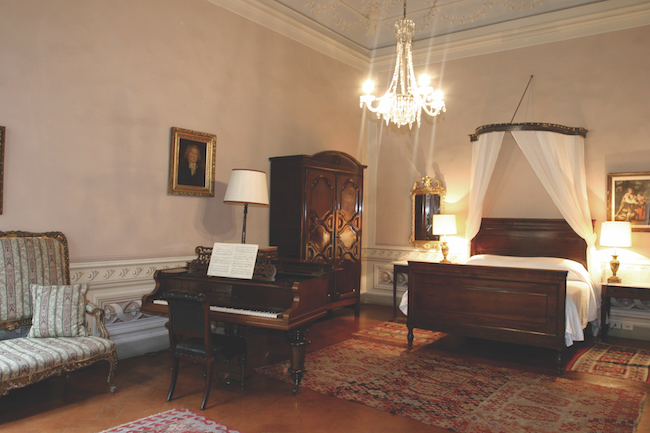
Rabbits on the terrace
Their son, Pen, was born in 1849 and grew up here learning the piano and keeping rabbits outside on the terrace. Unfortunately, over the period she lived in Florence, Elizabeth’s health once more declined and in 1861 she died in the bed in which she had given birth to Pen. After Elizabeth’s death Robert left Casa Guidi and eventually died in Venice in 1889. Before he left, though, he commissioned a picture of the drawing room, painted by George Mignaty.
Pen Browning’s greatest wish was that Casa Guidi should be recreated to how it was when they had all lived there so happily. This did not start happening until 1971, when most of the apartment was bought by the Browning Institute of New York. The Institute, founded to “encourage and develop the study of literature and the liberal arts, with particular emphasis on the writings and lives of Robert and Elizabeth Barrett Browning”, began to restore it and opened it up to visitors. They also decorated the drawing room and bedroom, trying to recreate it as closely as possible to how it was in the Brownings’ day.
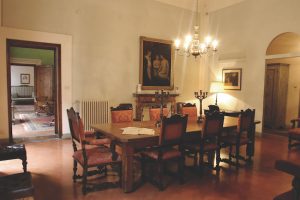
The Landmark Trust, a charity which rescues historic buildings and then lets them out for holidays (see more here), became involved with Casa Guidi in 1990. The Browning Institute was about to pass on its ownership of Casa Guidi to Eton College, who have a good collection of Browning material, with the aim of completing the restoration. Eton College approached the Landmark Trust to help with the restoration and make Casa Guidi available to a wider audience.
The transfer to Eton College took place in 1992 and then, after a lot of planning and much research, the apartment was furnished as closely as possible to the original described in the Mignaty painting. The restoration was completed in 1995 and the principal rooms are open to the public on Monday, Wednesday and Friday afternoons, 3-6pm, from April to November. It was agreed that it would be used as a study centre for Eton Boys for seven weeks each year and as a Landmark Trust holiday apartment for the rest of the time. Four rooms were restored to pretty much how they looked when the Browning’s were in residence and a modern kitchen and bedrooms were installed in the servants quarters. The British Ambassador in Italy opened the restored apartment in 1995 and since then it has been enjoyed by many visitors.
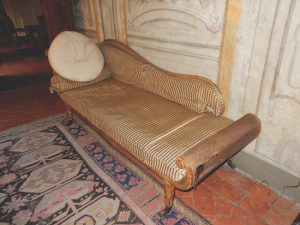
Now it was my turn to enjoy it and, to help me get in the right frame of mind before I went, I read Lady’s Maid by Margaret Forster. Lily Wilson, from whose viewpoint the story is told, was Elizabeth Barrett Browning’s maid who served her mistress for most of her adult life, and this book gave a marvellous insight to what went on at Casa Guidi.
My first impression as I entered was of an overriding sense of peace and tranquility and coolness, which was very welcome in the August heat of Florence. At first as I wandered around the apartment I thought this was going to be like living in a museum, but within a few hours it felt like home – if only for a few days. I imagined that it would be rather intrusive having strangers wandering around on the days it was open to the public but you are able to retreat to your bedroom or the kitchen and to be honest I was out exploring the delights of Florence most afternoons.
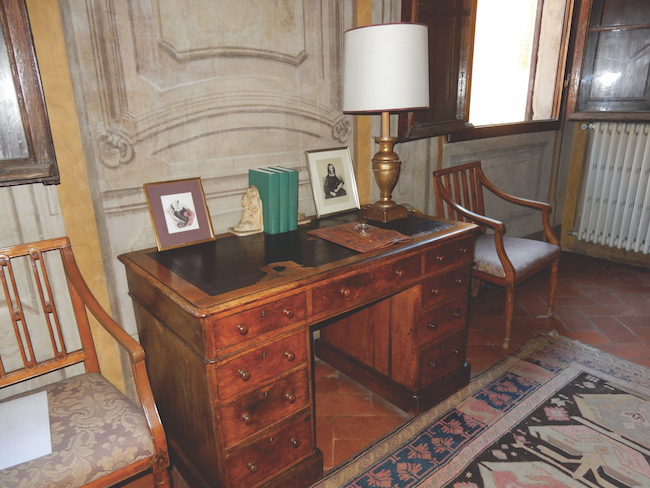
Sitting on the balcony
There was a huge bookcase of books about the Brownings in one of the rooms which I would have liked to have worked through but I didn’t have enough time for that. Sitting on the balcony, sipping my aperitivo in the early evening, I could imagine Elizabeth sitting in the same place watching over the bustling Florence street. The study was fascinating. Apart from the desk and other Browning memorabilia there is the chaise longue on which Elizabeth was reclining when Robert proposed to her.
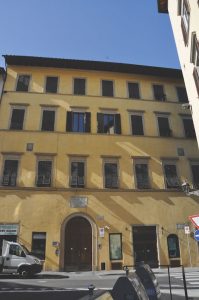
The bedrooms were comfortable, though I didn’t get to sleep in Elizabeth’s bedroom. I was in the servants’ quarters and, having read the book about Lily’s life, I could visualise what it had been like in the 1800s.
While I was in Florence, staying at the Casa Guidi, I was determined to go and visit the English Cemetery, where Elizabeth is buried. It is perched on a small, walled oval hill on Piazzale Donatello, one of the main ring roads round Florence. The history of this place dates back to 1827 when the site was purchased by the Grand Duke of Tuscany. It was then sold to Jean Pierre Gonin, founder of the Swiss Reformed Evangelical Church, to build the Protestant Cemetery. The small hill on which it sits was built by Michelangelo as a vantage point during the siege of 1530.
By the time it was purchased by Gonin it had grown larger from centuries of rubbish being thrown over the city walls. Medieval pottery is still being dug up there. Between 1827 and 1877 more than 1,400 graves were built there, representing 16 different nations. Only 700 of these graves remain today. The name “English Cemetery” became popular as so many English people are buried there. Following the demolition of the city walls, the cemetery was forced to close in 1877 under the Napoleonic code, which forbade the burial of bones within city limits.
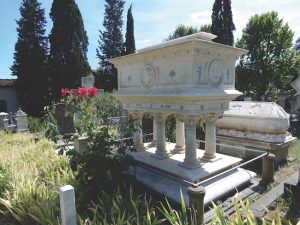
Anybody who has watched the opening sequence of the film Tea with Mussolini will know how grand a tomb Elizabeth has and what a beautiful place the English Cemetery is. Apparently, for being given permission to film this sequence here, Franco Zeffirelli donated
four stone benches, which are now perched at the top of the hill, surrounding the central marble column. He also phoned the mayor of Florence to plead for traffic lights and a pedestrian crossing to make reaching the cemetery easier. I am thankful that his pleas did not fall on deaf ears as crossing that busy road without them would be hair-raising! I spoke to the nun who lives in the gatehouse and looks after the cemetery while I was there and she told me that it was she who encouraged Margaret Forster to write her novel Lady’s Maid. I am so pleased she did.
Casa Guidi sleeps four (plus two more in a small bunk room). To find out more, get in touch with the Landmark Trust on 
More information
English Cemetary
English Cemetery opening times: Mon 9am-noon, Tue-Fri 3pm-6pm (summer) and 2pm-5pm (winter)
Essential Reading
Lady’s Maid by Margaret Forster, ISBN 9780099478485
